Affiliate links on Android Authority may earn us a commission. Learn more.
Original flagship vs 2017 model
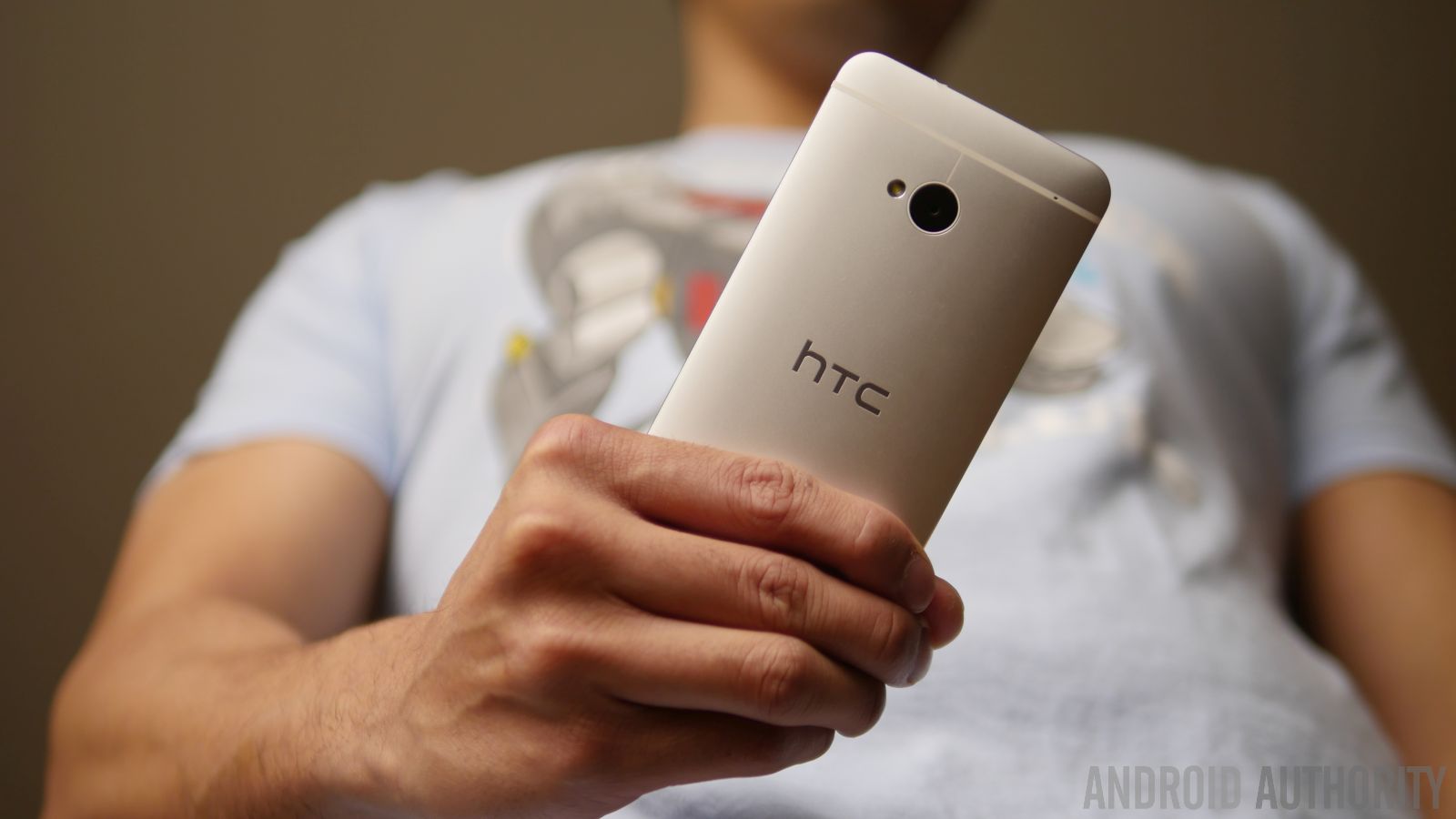
We’ve made it through the majority of 2017’s major flagship releases now, with Samsung, LG, HTC, Sony, Huawei, OnePlus, and many others all unveiling their latest and greatest. We’re spoilt for choice these days, but flagship smartphones haven’t always been so feature rich.
Long time smartphone enthusiasts will remember the days of old, long before waterproof phones and fingerprint scanners, and many may remember a time before Android implemented many of its most beloved features. So let’s travel back to some of these companies’ original flagships to see if they made the same kind of impact when they first arrived that their future successors make today. Have things improved or declined since Android’s heyday? And in what ways did these early phones shape the most recent releases?
Samsung Galaxy S vs Galaxy S8
We’ll start with the big dog: Samsung’s renowned Galaxy S series. Love or hate Samsung’s products, the company has been the biggest driving force behind turning Android into a competitor to Apple’s iOS, and the Galaxy brand remains popular across the world. Although Samsung’s Galaxy S2 was arguably its breakthrough handset, the series kicked off with the original Galaxy S in 2010. The phone was Samsung’s first serious attempt to take on the iPhone and ended up selling some 24 million units during its two and a half years on the market.
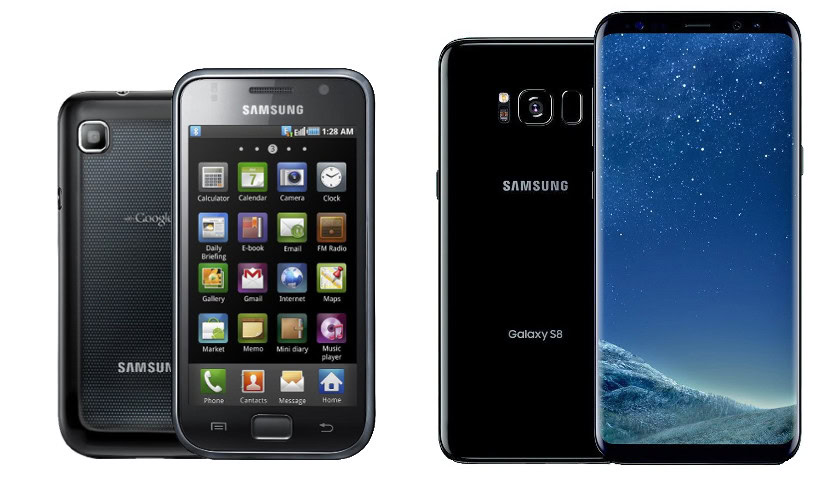
The original Galaxy S is now just over 7 years old, and so the specifications are obviously not going to be as impressive by today’s standards, but at the time the handset made a notable impact for its hardware. The Galaxy S arrived to many 4 and 5 star reviews, with commentators picking out the speed of its single core processing package and vibrant AMOLED display (that rivalled the more expensive iPhone) as major selling points. The only noted drawback was the plastic build quality, something that Samsung would take a few generations to grow out of, but the phone’s positive reception earned Samsung’s Galaxy S series a firm foundation in the smartphone market.
While Samsung may not be undercutting the iPhone for price these days, the company has continued to lead the market with cutting edge performance and display technology, both of which it designs and builds in-house. Samsung’s continued investment in AMOLED technology has also led to a completely new bezel-less design and look with its Galaxy S8.
It’s not just refreshed hardware that Samsung has invested in over the past 7 years though, the company now sells its flagship smartphones equipped with an IP68 dust and water resistant body, fingerprint and iris scanners, and Samsung Pay, among other features, that simply didn’t exist back in the Galaxy S days. It’s the investment and growth in proprietary features that, I would argue, has helped Samsung stay on top of the market for all these years.
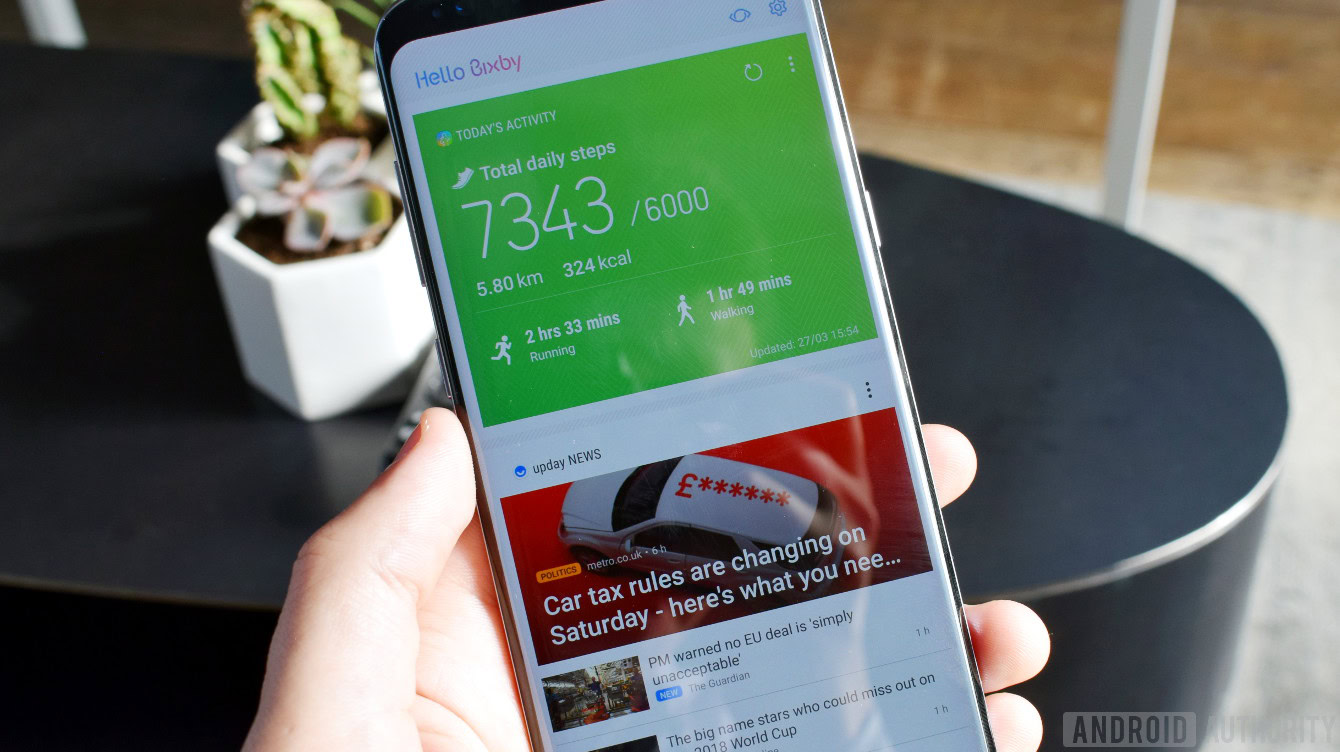
A discussion about the history of Samsung wouldn’t be complete without mentioning software. Touchwiz 3.0 made its debut on the Galaxy S, and introduced a number of features missing from stock Android at the time. This included WiFi and Bluetooth toggles in the pulldown menu, a horizontal scrolling app menu, and even a daily briefing widget offering up news and weather.
Some may call this bloat, but Samsung’s older handsets did help drag core software features forward too. Samsung’s UI certainly looks different now, and has evolved to include a range of additional features, from customizable Edge Display content to its Bixby hub page and virtual assistant.
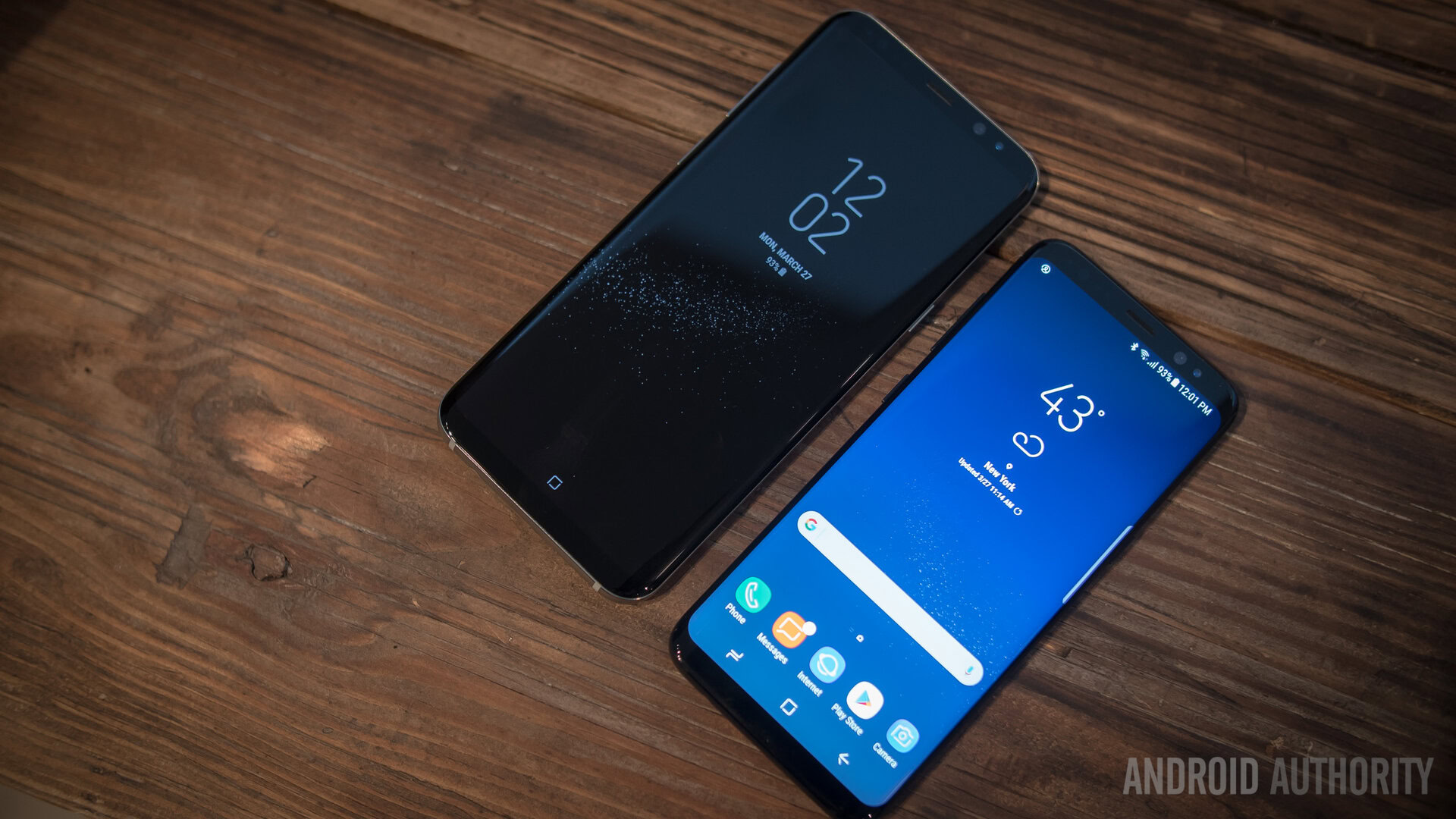
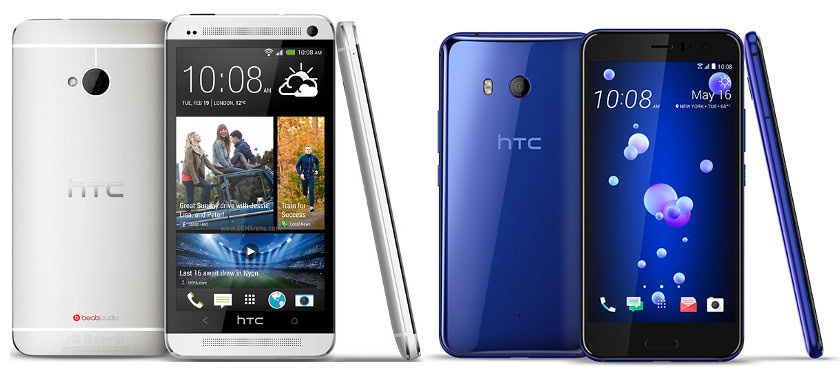
HTC One vs U11
HTC’s handsets can be traced right back to the beginning of Android smartphones, and the company built a reputation on a number of handsets that appeared before its most well known One series. HTC’s One naming scheme appears to have come to an end with the HTC 10 and U11, but as the picture above shows, the design language of the company’s latest flagships is still very much based in its most prolific series. Although the One name appeared with HTC’s 2012 One X, V, and One S models, I would argue that it was the massively overhauled HTCOne (M7) that inspired the range that we’re now so familiar with.
The HTC One (M7) appeared in 2013, so it’s a more modern comparison to today’s handsets that the likes of the Galaxy S. As you would expect from a flagship phone at the time, the HTCOne was a highly capable handset, boasting cutting edge performance and display technology, as well as a host of extras.
The HTCOne introduced stereo speakers to the flagship Android market and kickstarted consumer demand for superior build materials.
One of the most notable introductions with this model was HTC’s “Ultrapixel” camera technology. The idea was to use fewer – but larger – 2 μm photodiodes inside the camera sensor in order capture more light and improve image quality over the competition.
Unfortunately, the limited 4 megapixel resolution didn’t win over the critics and the handset suffered from a notoriously split opinion over it’s camera quality. In a way, the HTCOne was probably just a little ahead of its time, as many modern smartphones have now adopted larger than typical 1.4 μm photodiode sized sensors in modern smartphones. The U11, which takes the same approach, is now viewed as one of the best smartphone cameras around, a notable change in perception from just a few years ago.
But perhaps the HTCOne’s biggest contribution to the smartphone market was a new wave of build materials and a notable improvement in design quality. The handset’s aluminum body stood out above the plastic builds offered by HTC’s Android competitors and spawned a wave of metal unibody handsets in the following generation. Combined with its impressive stereo BoomSound speakers, the One kickstarted a series of handsets that solidified a dedicated fanbase for the company. Unfortunately for HTC, the series never quite sold as well as its rivals and the company’s mindshare never grew, for various reasons ranging from an overly large product range, to mixed camera performance and a lack of marketing.
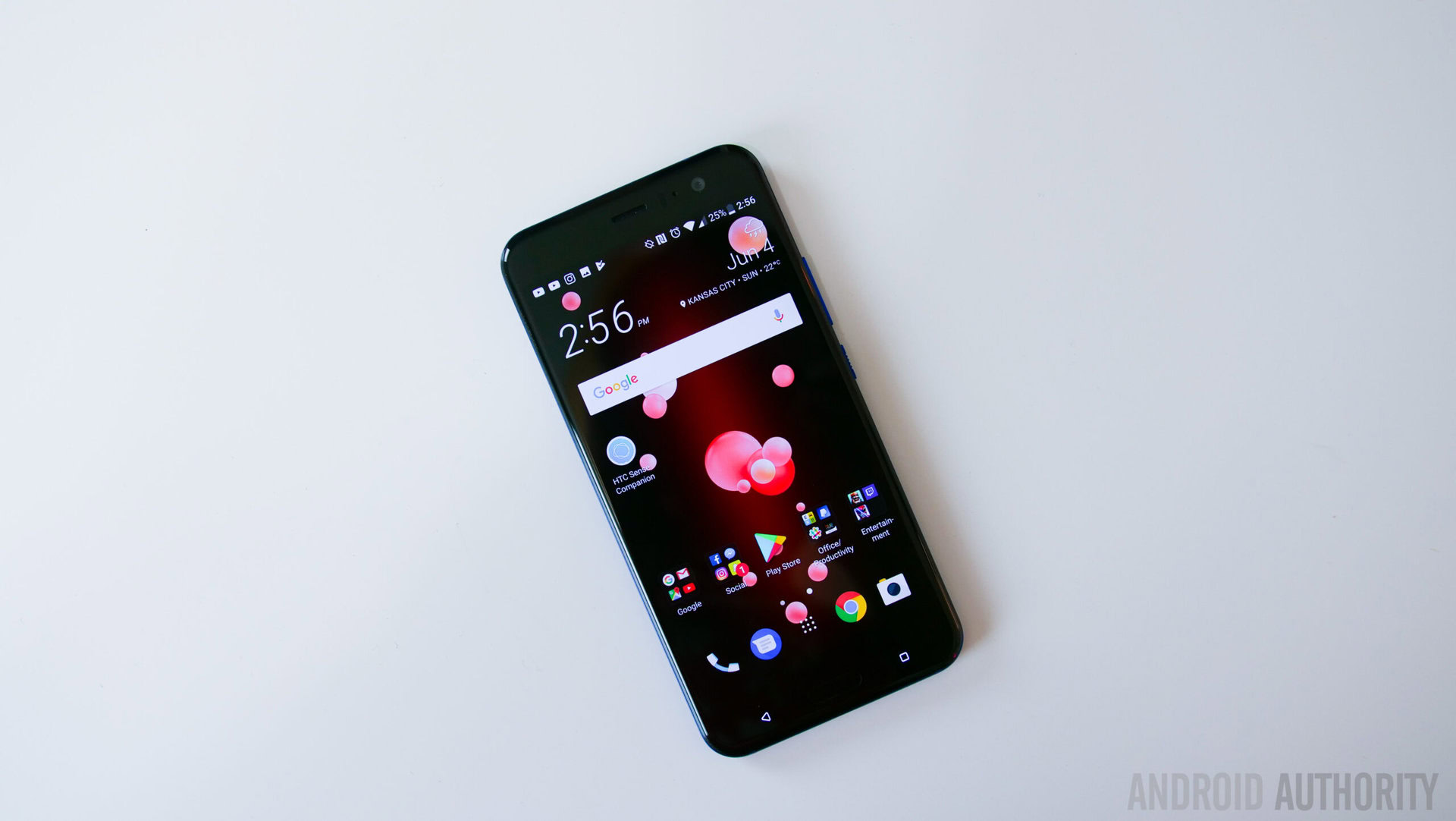
Since then, HTChas refined its design process further and has consistently produced some of the most well-built smartphones around. The U11 moves over to a stunning glass panel build with an IP67 water resistance rating. However, the decision to remove the 3.5mm jack and tout a squeezable frame as its latest cutting edge feature might not sound as convincing as some of the company’s previous innovations.
Compared with Samsung, HTC’s flagship software hasn’t changed so notably, bar the improvements made in core Android. Sense UI has always been a more minimalistic affair, with the company preferring to introduce new apps rather than clutter up its UI. The Zoe camera software, for example, appeared in the original One and the latest U11 has the company’s own agnostic take on virtual assistants with support for both Google and Alexa as well as its own Sense Companion. HTCwas also one of the first companies to start shifting its core features into apps distributed via Google Play rather than bundling them with firmware updates.
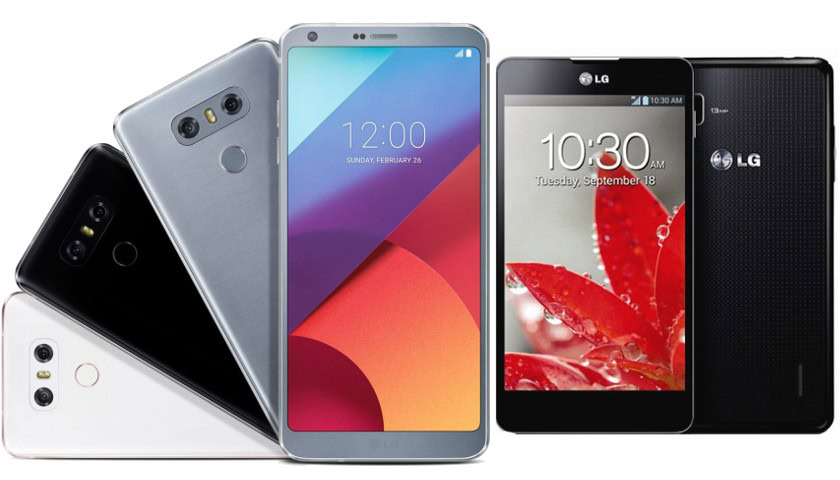
LG Optimus G vs LG G6
Although LG is not one of the old guard like HTCor Motorola, having entered the market a little later than Samsung, LG’s current line up of flagship smartphones can still trace it roots back to 2012. The LG Optimus G was the starting point for the company’s now long-running G series, although it wasn’t until the company’s legendary G2 that LG had a real breakthrough in the flagship market.
The Optimus G was LG’s take on the flagship market, after having spent some time dabbling in the lower cost pre-paid market with its L-Series beforehand. Still, the phone launched with very competitive hardware, rivaling the likes of Samsung’s impressive Galaxy Note 2 that arrived at the same time. The Optimus G was the first smartphone to combine Qualcomm’s Snapdragon S4 with an LTE radio package, however the phone didn’t have a microSD card slot or removable battery, two features in later models that would win LG many fans.
LG staked its early reputation on high-end specifications and fast LTE, but has since transitioned to focus on camera quality and other features over just raw processing power.
The phone arrived to many a 4-star review, with many praising the quality of its LCD display and glossy “Crystal Reflection” finish, which clearly doesn’t look anything like LG’s subsequent G series designs. Unfortunately though, by the time the phone made it to the US market in 2013 the hardware wasn’t quite so cutting edge. The phone was also rightly criticised for missing Jelly Bean at launch, which was certainly a setback for LG’s flagship ambitions. Out of the biggest names in the smartphone race today, LG was perhaps the slowest to start.

Fast forward to the LG G6, and things look very different for the company’s flagship range. The company was the first to offer Nougat out of the box with the V20. LG also hasn’t been so fussed about cutting edge processing hardware lately – the G6 arrived sporting last year’s Snapdragon 821 rather than waiting for the 835. Instead, the company has focused on a new bezel-less design and refining its unique dual camera package to offer perhaps the most flexible smartphone camera on the market. Combined with an IP68 rating, wireless charging, and HDR display tech, the company has a very different focus than it did in the Optimus G days.
Compared with HTCand Samsung, LG’s smartphone vision has perhaps changed the most between generations, from focusing on phablets and modular design, to relying more heavily on the camera and coming full circle on removable batteries.
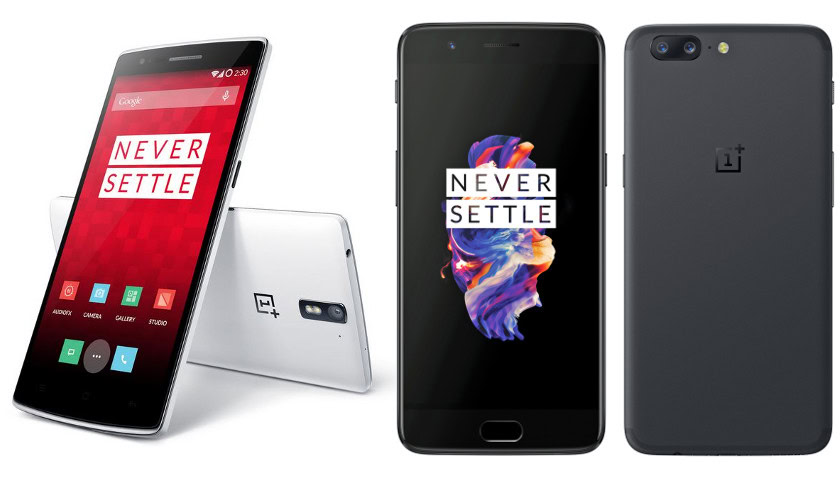
OnePlus One vs OnePlus 5
OnePlus is a newer player in the smartphone market, releasing its original OnePlus One as recently as 2014, but it has already gone through six handset revisions, five of which were designed to compete with the very best flagships on the market. OnePlus has always aimed to undercut the major players and has so far not failed to deliver on that cutthroat promise.
The company’s aggressive business model kicked off with the OnePlus One, a handset packing in 90 percent of what you could buy from any other flagship smartphone but sold at around half the price. The company also aimed to differentiate itself from its competitors with its stock Android-like Oxygen OS and a deal with Cyanogen to provide OS updates, a deal which would eventually fall through.
OnePlus' handset strategy remains as aggressive as ever, but the company's business and marketing approach has thankfully matured.
The strategy proved to be a success following the launch of the OnePlus One, with many reviews astonished at the hardware on offer for such little cost, despite a few compromises such as a lack of a microSD card slot. However the low cost phone wasn’t without its issues.
Some customers ran into touchscreen and Bluetooth issues, and the breakdown of the relationship with Cyanogen Inc resulted a slow upgrade to Android 5.1. Furthermore, the limited availability of the phone sold via an invite-only system made obtaining one a frustrating experience for many. Fortunately this sales method is now ancient history.
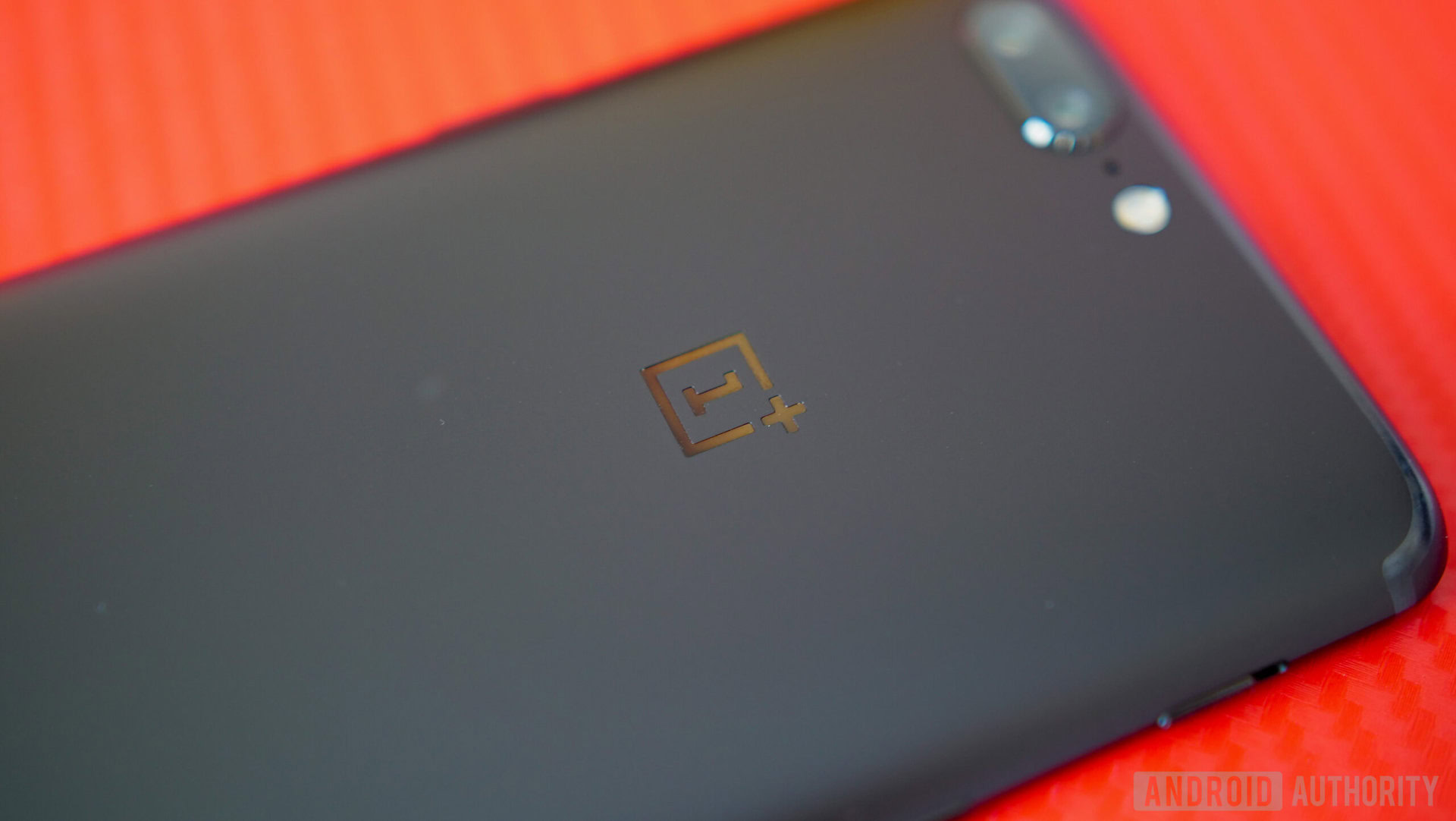
The newly released OnePlus 5 follows the same ethos, boasting flagship-grade hardware as well as being one of the first to offer an “optical zoom” rear camera. The company’s business strategy has also matured significantly from the early days, after learning a few lessons the hard way. You won’t find all the bells and whistles on the OnePlus 5, and the $479/$539 price is a fair bit more expensive than the $299/$349 that the range first launched at. However, the “Never Settle” mantra remains alive and well.
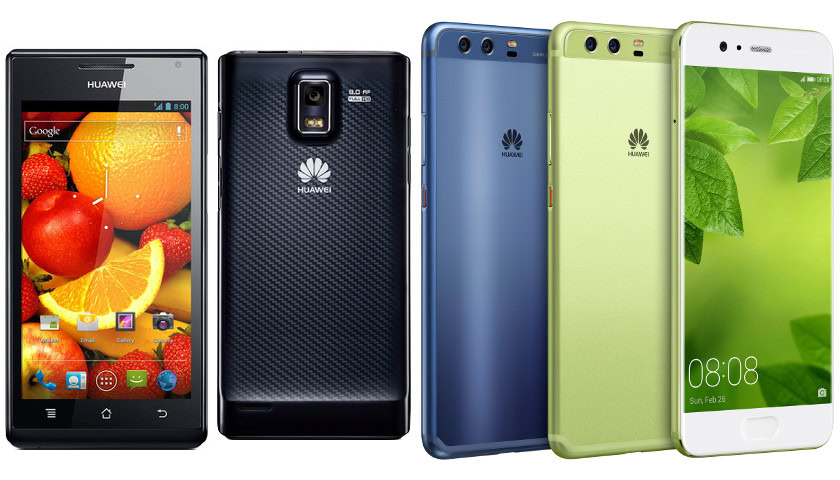
HUAWEI Ascend P1 vs P10
HUAWEI may have only broken through into the mainstream Western markets within the past two or so years with the P9 and P10, but its flagship smartphone range has been running a lot longer than that. The Ascend P1 made its debut back in January 2012, but the series didn’t quite start out as the competitive force that it is today.
The Ascend P1 landed with a dual-core Texas Instruments OMAP 4460 CPU and a 540 x 960 4.3-inch display that wasn’t quite up to scratch with Samsung’s Galaxy S3, which hit store shelves at the same time boasting a quad-core Exynos 4412 SoC and 720 x 1,280 panel. The lack of NFC, a so-so build, and limited storage capacity also resulted in review scores below what you would expect from a modern HUAWEI handset. In the end, many viewed the P1 as a continuation of HUAWEI’s more budget oriented models.
Huawei's early focus on camera quality and solid specifications has remained in place, and the company has brought its camera and SoC developments in-house since the P1's debut.
Still, the Ascend P1 came sporting an ultra-thin 7.69 mm profile, a noteworthy 8 MP rear camera setup, and its 2,999 Yuan ($475 in 2012) / £360 / €450 price tag put the HUAWEI brand on people’s radar, even if most Westerners couldn’t even pronounce it at the time. Even so, the arrival of the Ascend range was certainly more muted than launches from the likes of Samsung and HTC.
The focus on a competitive price point and top notch camera quality is a theme that has remained consistent from the P1 days though. HUAWEI’s latest models have won praise for their impressive dual camera configuration, developed in part through a partnership with Leica. The P10 also boasts a slick new design that should assuage any old doubts about build quality.
Since the P1, HUAWEI has also taken processor development in house, with its HiSilicon Kirin range powering a number of devices to date, including the company’s latest P10. Its Kirin 960 is highly competitive with Samsung’s Exynos and Qualcomm’s top end Snapdragon chips. HUAWEI has taken more technology in-house than many other smartphone manufacturers over the past half a decade. I’d argue that this is what has helped the company to so effectively compete with the likes of Apple, Samsung, and LG in recent years – all of whom also produce various in-house components – and to become one of the biggest global smartphone brands.
Your favourites?
That’s just a quick look back at a handful of the most popular Android smartphones ranges today, but there have been many more greats over the years too. Have I missed out any of your favourite product lines, do you have fond memories about any of these smartphones?